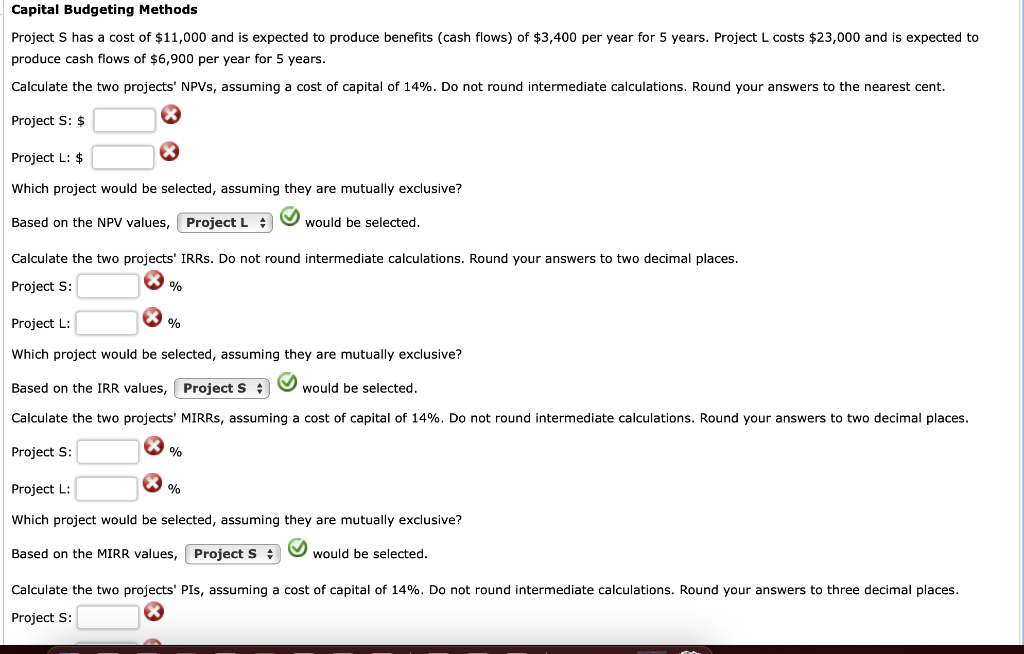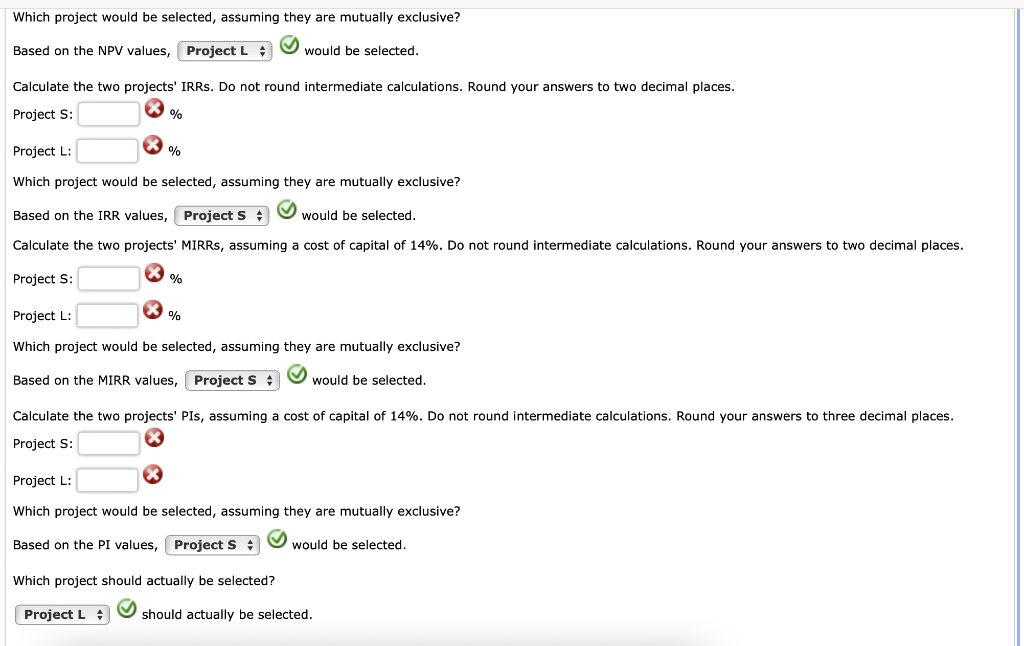Capital Budgeting Methods Project S has a cost of $11,000 and is expected to produce benefits (cash flows) of $3,400 per year for 5


Capital Budgeting Methods Project S has a cost of $11,000 and is expected to produce benefits (cash flows) of $3,400 per year for 5 years. Project L costs $23,000 and is expected to produce cash flows of $6,900 per year for 5 years. Calculate the two projects' NPVs, assuming a cost of capital of 14%. Do not round intermediate calculations. Round your answers to the nearest cent. Project S: $ Project L: $ Which project would be selected, assuming they are mutually exclusive? Based on the NPV values, Project L + would be selected. Calculate the two projects' IRRs. Do not round intermediate calculations. Round your answers to two decimal places. Project S: Project L: % % Which project would be selected, assuming they are mutually exclusive? Based on the IRR values, Project S would be selected. Calculate the two projects' MIRRS, assuming a cost of capital of 14%. Do not round intermediate calculations. Round your answers to two decimal places. Project S: Project L: % % Which project would be selected, assuming they are mutually exclusive? Based on the MIRR values, Project S + would be selected. Calculate the two projects' PIs, assuming a cost of capital of 14%. Do not round intermediate calculations. Round your answers to three decimal places. Project S: Which project would be selected, assuming they are mutually exclusive? Based on the NPV values, Project L would be selected. Calculate the two projects' IRRs. Do not round intermediate calculations. Round your answers to two decimal places. Project S: Project L: % % Which project would be selected, assuming they are mutually exclusive? Based on the IRR values, Project S + would be selected. Calculate the two projects' MIRRS, assuming a cost of capital of 14%. Do not round intermediate calculations. Round your answers to two decimal places. Project S: % Project L: % Which project would be selected, assuming they are mutually exclusive? Based on the MIRR values, Project S + would be selected. Calculate the two projects' PIs, assuming a cost of capital of 14%. Do not round intermediate calculations. Round your answers to three decimal places. Project S: Project L: Which project would be selected, assuming they are mutually exclusive? Based on the PI values, Project S would be selected. Which project should actually be selected? Project L should actually be selected.
Step by Step Solution
There are 3 Steps involved in it
Step: 1
Certainly Lets go through each calculation in detail to analyze the capital budgeting decision for Projects S and L Ill explain each method used provide stepbystep calculations and add reallife insigh...
See step-by-step solutions with expert insights and AI powered tools for academic success
Step: 2

Step: 3

Ace Your Homework with AI
Get the answers you need in no time with our AI-driven, step-by-step assistance
Get Started


